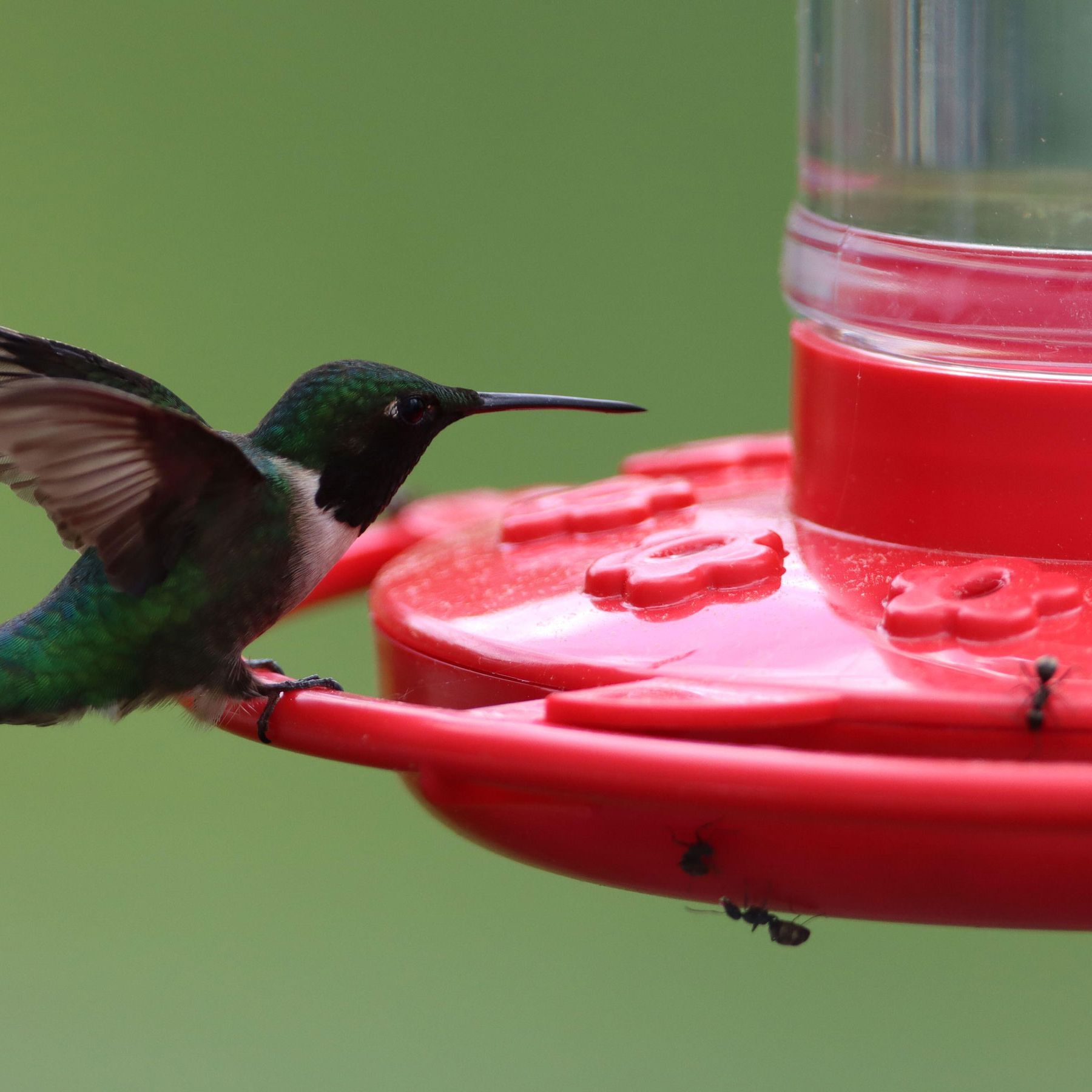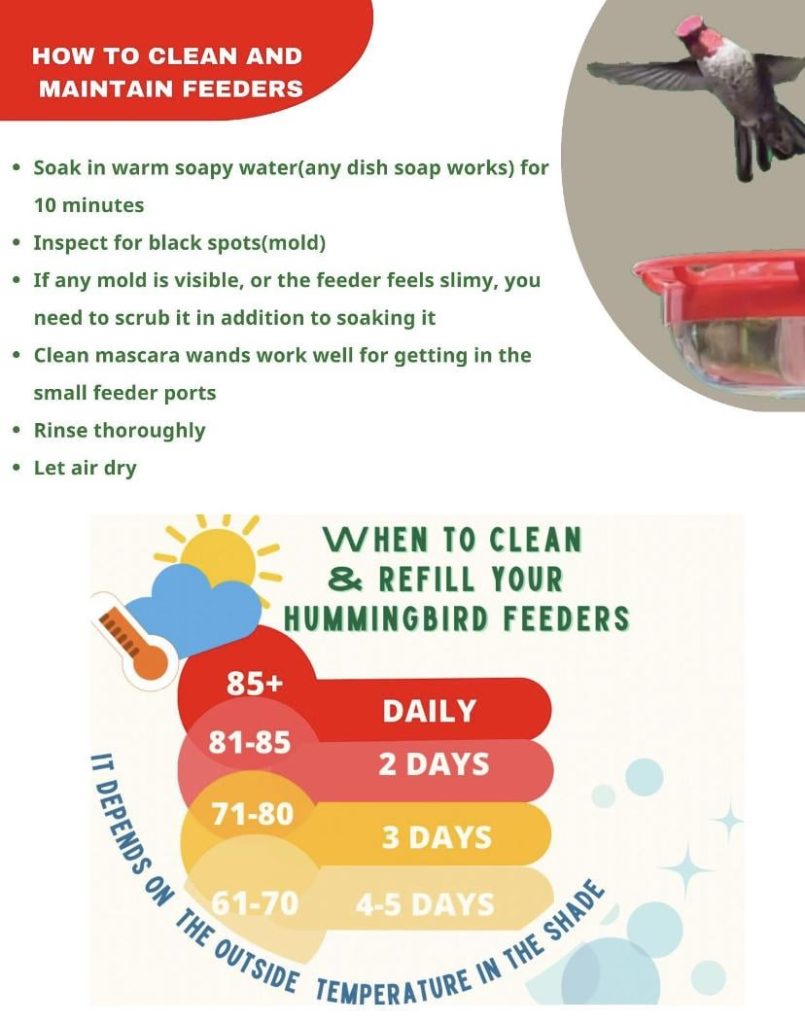Have you ever filled your hummingbird feeder with fresh, clear nectar only to find it cloudy and unappealing just days later? You’re not alone.
This common issue puzzles many bird enthusiasts, leaving them wondering if something’s amiss. Cloudy hummingbird food isn’t just a cosmetic concern; it might signal potential problems that could affect the tiny creatures you’re trying to attract. Understanding why your hummingbird nectar turns cloudy and how to prevent it can ensure a safe and inviting feeding environment for these delightful visitors.
Stick around as we unravel the mystery and offer simple solutions to keep your feathered friends happily sipping away.

Credit: www.homesandgardens.com
Common Causes Of Cloudy Hummingbird Food
Cloudy hummingbird food can be a common problem for many bird lovers. It can affect the health of hummingbirds and reduce their visits to your feeder. Understanding the common causes helps keep the food fresh and safe.
Cloudiness often signals changes in the food’s quality. Several factors may cause this issue, from natural growths to the ingredients used. Identifying the cause can guide you on how to clean or replace the food properly.
Bacterial Growth
Bacteria grow quickly in sugary water, especially in warm weather. This growth can turn the nectar cloudy and smell bad. Using clean feeders and changing the food regularly helps stop bacteria from spreading.
Mold Formation
Mold appears as fuzzy spots and can make the food unsafe. It thrives in moist, warm conditions and can develop on feeder surfaces or inside the nectar. Cleaning feeders with hot water and vinegar removes mold and keeps it away.
Sugar Crystallization
Sugar can form crystals when the solution cools or is too concentrated. These crystals make the nectar look cloudy or grainy. Mixing the right sugar-to-water ratio and stirring well stops crystallization.
Water Quality Issues
Tap water often contains minerals or chlorine that cloud the nectar. Using filtered or distilled water improves clarity and safety. Clean water keeps the food fresh and more attractive to hummingbirds.
Effects Of Cloudy Food On Hummingbirds
Cloudy hummingbird food is a common problem for many bird enthusiasts. It signals the presence of bacteria or mold. This change in food quality impacts hummingbirds in several ways. Understanding these effects helps keep the birds safe and happy at your feeder.
Health Risks
Cloudy food often contains harmful bacteria or mold. These can cause illness in hummingbirds. Symptoms may include weakness, lethargy, or worse. Sick birds may avoid feeding or die. Providing clean food helps prevent these health risks.
Attracting Fewer Birds
Hummingbirds prefer fresh, clear nectar. Cloudy food looks unappealing and may smell bad. Birds will search for cleaner feeders nearby. This means fewer visits to your feeder. Keeping food clear encourages more hummingbird visits and enjoyment.
How To Prevent Cloudy Hummingbird Food
Cloudy hummingbird food can be frustrating, but preventing it is easier than you might think. The key lies in how you prepare and maintain your feeder. By focusing on cleanliness, the right mixture, good water, and timely replacement, you can keep your hummingbird food clear and inviting.
Proper Cleaning Techniques
Cleaning your feeder thoroughly is essential to stop cloudiness caused by bacteria and mold. Use hot water and a mild soap, scrubbing every nook with a bottle brush. Rinse well to remove all soap residues, as leftover soap can harm hummingbirds and contribute to cloudiness.
Try cleaning your feeder every time you refill it. This habit prevents buildup and keeps your feeder fresh. Have you noticed how a clean feeder attracts more hummingbirds? That’s no coincidence.
Using The Right Sugar-to-water Ratio
Mixing the right sugar-to-water ratio is crucial. Use one part white granulated sugar to four parts water for the best results. Too much sugar can lead to fermentation, turning your nectar cloudy quickly.
A simple sugar ratio also mimics natural nectar, making it healthier for hummingbirds. Avoid using honey or artificial sweeteners—they spoil faster and cause cloudiness. Have you tried measuring your sugar carefully before? It makes a big difference.
Choosing Suitable Water
The type of water you use impacts the clarity of your hummingbird food. Tap water with high mineral content often causes cloudiness. Using filtered or distilled water can keep your nectar clear longer.
Cold water helps slow down fermentation too. If your water tastes strange or smells odd, don’t use it for your feeder. Would you drink that water yourself? If not, neither will the hummingbirds.
Frequent Food Replacement
Replacing your hummingbird food frequently prevents cloudiness and keeps birds coming back. Nectar can spoil quickly in warm weather—change it every two to three days in summer.
In cooler months, once a week is usually enough. Never let old nectar sit in the feeder; it attracts bacteria and mold. How often do you refresh your feeder? Adjusting this habit can improve your hummingbirds’ health and your viewing pleasure.

Credit: www.kitchenparade.com
Quick Fixes For Cloudy Hummingbird Food
Cloudy hummingbird food can turn your feeder unappealing and unhealthy for birds. Simple fixes can keep your nectar clear and fresh. These quick tips help maintain clean food and attract hummingbirds consistently.
Refreshing The Feeder
Empty the feeder completely. Rinse it thoroughly with hot water. Avoid using soap as it can leave harmful residues. Let the feeder dry fully before refilling. Regular cleaning prevents cloudiness and mold growth. Change the nectar every two to three days, especially in warm weather.
Boiling The Solution
Prepare the nectar by boiling water first. Add sugar only after removing the water from heat. Stir until the sugar dissolves completely. Boiling kills bacteria and mold spores. This method helps keep the nectar clear longer. Cool the solution before pouring it into the feeder.
Avoiding Additives
Use only pure white granulated sugar and water. Avoid honey, artificial sweeteners, or food coloring. These additives encourage mold and bacteria growth. Keep the nectar simple to maintain its clarity. Plain sugar water is safe and effective for hummingbirds.
Tips For Maintaining Clear Hummingbird Feeders
Keeping your hummingbird feeder clear helps attract more birds. Cloudy food can scare them away. Simple care steps keep feeders clean and fresh. Follow these tips to maintain clear hummingbird feeders all season.
Regular Inspection
Check your feeder daily for cloudiness or mold. Clean it immediately if food looks murky. Use warm water and mild soap to wash parts. Rinse thoroughly to remove soap residue. Regular cleaning stops bacteria growth and keeps nectar fresh.
Proper Storage
Store extra hummingbird food in a cool, dark place. Avoid direct sunlight or heat, which spoil the nectar. Use airtight containers to keep bugs and dirt out. Make fresh food every few days. Old nectar turns cloudy and unsafe for birds.
Optimal Feeder Placement
Place feeders in shaded areas to slow nectar spoilage. Sunlight heats nectar quickly, causing cloudiness. Keep feeders away from wind and rain to prevent contamination. Position feeders where you can watch birds easily but avoid busy spots.

Credit: www.reddit.com
Frequently Asked Questions
Why Does Hummingbird Food Turn Cloudy Quickly?
Hummingbird food turns cloudy due to bacterial growth and fermentation. Warm temperatures speed this process. Use fresh food and clean feeders regularly to prevent cloudiness and keep birds healthy.
How Often Should I Change Hummingbird Nectar?
Change hummingbird nectar every 2 to 3 days in warm weather. Cooler temperatures allow up to a week. Frequent changes reduce bacteria and mold, keeping nectar fresh and safe for hummingbirds.
Can Cloudy Hummingbird Food Harm Birds?
Yes, cloudy hummingbird food can harbor harmful bacteria. It may cause illness or deter birds from feeding. Always replace cloudy nectar with fresh solution to ensure birds stay healthy and active.
What Causes Hummingbird Nectar To Ferment?
Nectar ferments when exposed to heat, sunlight, and bacteria. Fermentation causes cloudiness and a sour smell. Store feeders in shade and replace nectar often to avoid fermentation and keep birds attracted.
Conclusion
Cloudy hummingbird food means it has started to spoil. Bacteria and mold grow quickly in sweet water. Changing the food every two to three days helps keep it fresh. Clean your feeder well before refilling to stop germs. Use only plain sugar and water for best results.
Avoid adding honey or dyes that cause cloudiness. Clear food attracts hummingbirds better and keeps them healthy. Watching these small birds is more fun with clean feeders. Keep food fresh to enjoy your hummingbird visitors longer. Simple care makes a big difference in their safety.

